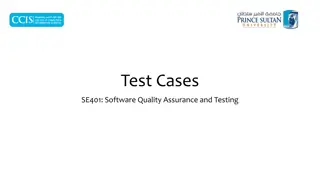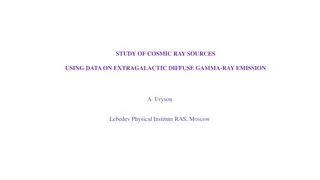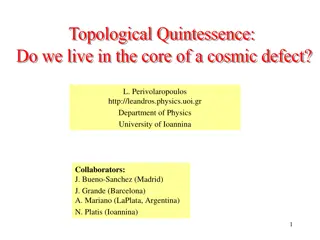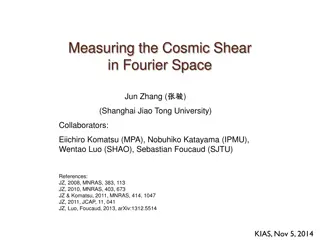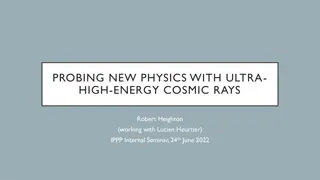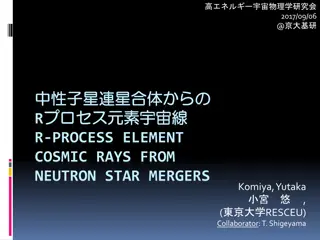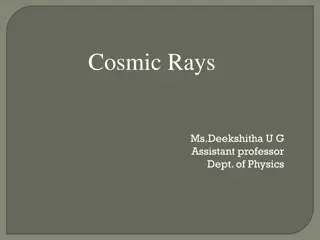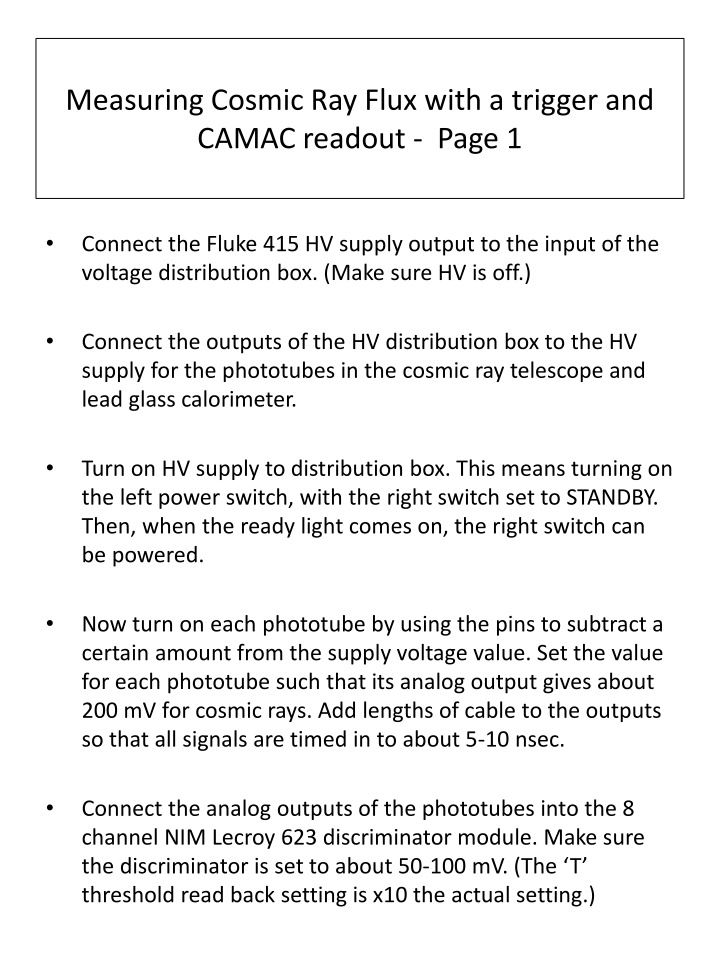
Measure Cosmic Ray Flux with Trigger and CAMAC Readout
Learn how to measure cosmic ray flux using a trigger and CAMAC readout system. Follow step-by-step instructions to connect equipment, adjust settings, measure rates, form coincidences, and collect data. Understand the significance of adjusting voltage, gate width, and timing for accurate readings in cosmic ray detection.
Download Presentation

Please find below an Image/Link to download the presentation.
The content on the website is provided AS IS for your information and personal use only. It may not be sold, licensed, or shared on other websites without obtaining consent from the author. If you encounter any issues during the download, it is possible that the publisher has removed the file from their server.
You are allowed to download the files provided on this website for personal or commercial use, subject to the condition that they are used lawfully. All files are the property of their respective owners.
The content on the website is provided AS IS for your information and personal use only. It may not be sold, licensed, or shared on other websites without obtaining consent from the author.
E N D
Presentation Transcript
Measuring Cosmic Ray Flux with a trigger and CAMAC readout - Page 1 Connect the Fluke 415 HV supply output to the input of the voltage distribution box. (Make sure HV is off.) Connect the outputs of the HV distribution box to the HV supply for the phototubes in the cosmic ray telescope and lead glass calorimeter. Turn on HV supply to distribution box. This means turning on the left power switch, with the right switch set to STANDBY. Then, when the ready light comes on, the right switch can be powered. Now turn on each phototube by using the pins to subtract a certain amount from the supply voltage value. Set the value for each phototube such that its analog output gives about 200 mV for cosmic rays. Add lengths of cable to the outputs so that all signals are timed in to about 5-10 nsec. Connect the analog outputs of the phototubes into the 8 channel NIM Lecroy 623 discriminator module. Make sure the discriminator is set to about 50-100 mV. (The T threshold read back setting is x10 the actual setting.)
Measuring Cosmic Ray Flux with a trigger and CAMAC readout - Page 2 Connect the outputs of the discriminator to the NIM Lecroy 622 Quad Coincidence Unit. Measure the coincidence rate in the upper pair of scintillators. Likewise measure the coincidence rate in the bottom pair. Are they the same? If not, why not? Form a coincidence between all 4 phototubes. Move the top pair of scintillators back and forth along the track, measuring the rates at different angles. Record the increase in rate as the top pair comes out from under the beamline shielding. Record the increase in rate as you bring the bottom pair out from under the steel shielding. Hook the lead glass block up to HV and connect its analog output to the oscilloscope. Point the cosmic telescope so that it is roughly pointing into the lead glass block.
Measuring Cosmic Ray Flux with a trigger and CAMAC readout - Page 3 Trigger the oscilloscope using the cosmic coincidence and look at the lead glass output. Adjust its voltage so it has about 100 mV pulse height? Why? (Hint: look at ADC specs) Adjust the width of the coincidence gate and its timing so that the lead glass output starts about 10 nsec after the beginning of the gate, and is fully contained within the gate. Now hook the gate up to the gate input of the CAMAC Lecroy 2249 ADC. Likewise, hook the lead glass output into one of the CAMAC ADC channels. Run the automated program to take cosmic data. Many of the events will be blank. Why? Can you predict this?
Measuring Cosmic Ray Flux with a trigger and CAMAC readout - Page 4 Now form a trigger veto hold-off: Set the NIM gate generator into whatever hold-off setting you want (1 millisecond?, 10 seconds?). You can use the jewelers screwdriver to change the vernier screw setting. Connect an output from the coincidence unit into the START of the gate generator. Connect the gate generator output to the VETO input of the coincidence unit. You are now holding off any further triggers until the gate has completed its pulse. Note how trigger rates change as you change the holdoff time. In the second day, we will have a gate generator that can talk to CAMAC and we will clear the holdoff with a computer command at the end of the readout.

![❤[READ]❤ Cosmic Biology: How Life Could Evolve on Other Worlds (Springer Praxis](/thumb/21556/read-cosmic-biology-how-life-could-evolve-on-other-worlds-springer-praxis.jpg)


